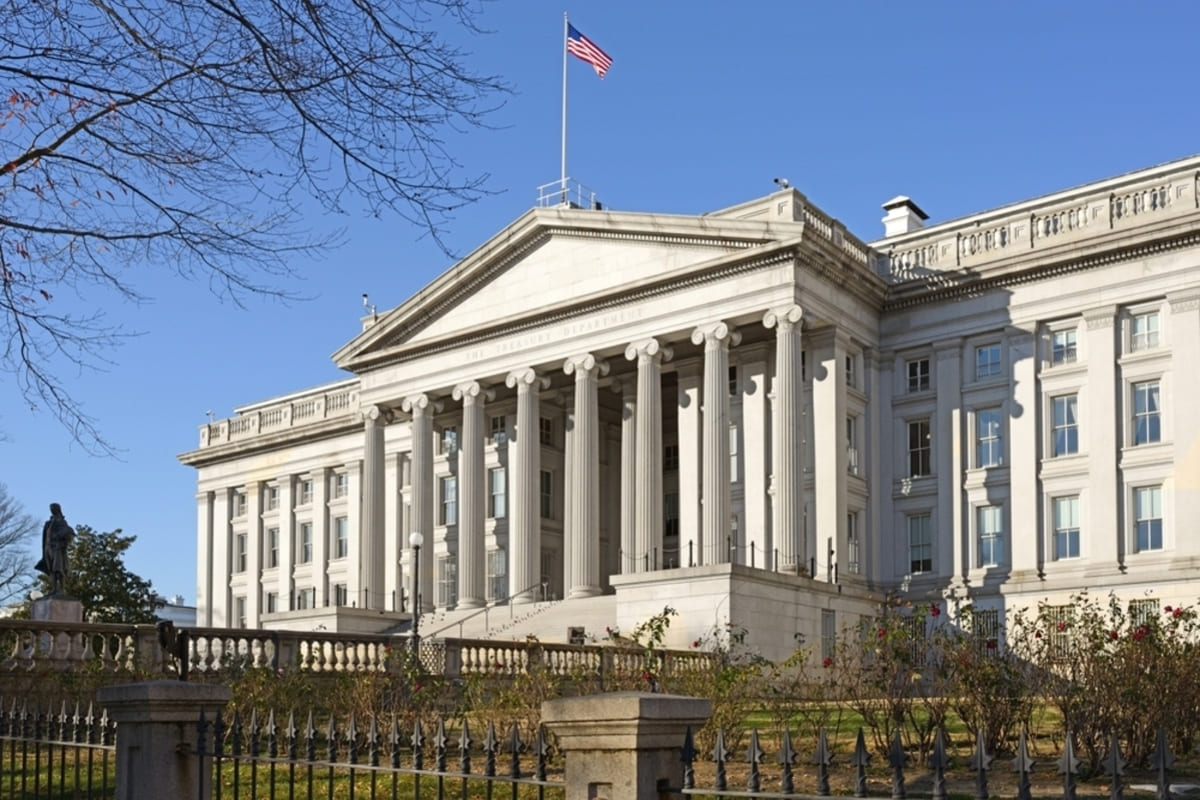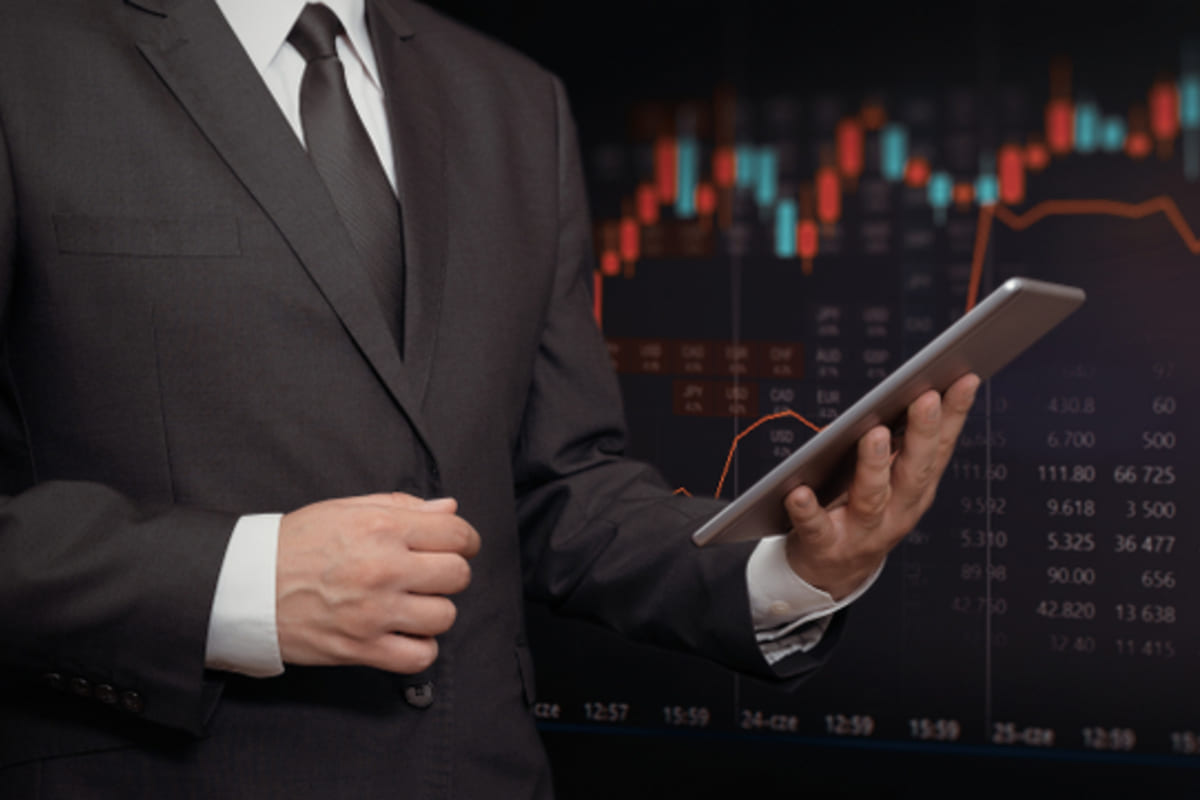The economic issues in the U.S. require the consideration of diversified measures to reduce risks and exploit the chances of growth
The increased uncertainty and lack of clear market direction during the first half of 2025 has been brought on by changing geopolitics and unpredictability of policy to a great extent. A new report by Swiss banking firm Julius Baer argues that the days of U.S dominated markets are long gone by and the world is shifting towards a more multipolar type of investment world. The capitalists are moving out of America to Europe and Asia where governments are implementing supportive fiscal and regulatory policies that help in the growth of their economies.
Geopolitical crises such as the Russia-Ukraine war and the U.S.-China rivalry has transfigured the world capital flows, hastening the regionalization and investment redirection to the Southeast Asia, Eastern Europe and Africa. Diversification and resilience strategies in the supply chain have been incorporated in the capital allocation decisions. To counter the slowdowns and inflation, European and Asian central banks combine monetary easing with fiscal stimulus, which strengthens multipolarity in investment centers. The economic and geopolitical significance of such strategic areas as cybersecurity, energy transition, and infrastructure is the focal point. This changing landscape necessitates the need by investors to have diversified and global portfolios in order to control risk and pursue growth in new frontiers.
The geographic diversification is also motivated by the investor fears on the sustainability of the U.S. fiscal and monetary policy due to the political gridlock and excessive debt. Europe has growth potential particularly based on infrastructure investment, Asia in terms of technology innovation whereas emerging markets in Africa and Latin America have the advantage of supply chain realignments and resource demands. This dynamic movement of the global capital flows shows that there is a shift in favor of equalizing geopolitical risks with new areas of growth, facilitating the diversification of strategic global portfolios.

U.S economy: Problems and Middle ground growth prognosis
The U.S. economy is struggling to grow slowly and with continuous inflation that is made worse by policy constraints and unpredictable fiscal signals. There are high risks of recession but they are not anticipated to be long term because there are no severe domestic imbalances. It is expected that the Federal Reserve will make two additional 50 basis-point rate cuts in the second half of 2025, yet corporate trepidation about growth in terms of investment and hiring is weighing down on growth expectations.
The reason behind slow growth is mainly because of the cautious business behaviour where businesses are reluctant to make the strategic investment or employ within the economic uncertainty. According to surveys, majority of the businesses are awaiting to have clear understanding of the trade policies, interest rates and the economic outlooks before they can expand or invest heavily in capital ventures. Though there is no visible pessimism, this conservative course is suffocation the business investment momentum that is essential in the long-term economic growth. The creation of employment is also decelerating as employers are focusing on nervous system and effectiveness rather than intensive recruitment because of the current inflation and expenses.
Inflation has been higher than the target of the Federal Reserve and this has been partly caused by price pressures caused by tariffs and this is likely to reduce slowly until 2026. The consumer expenditure being a major driver of GDP is growing at a slow rate because people are worried about the high cost of living and how an increase in interest rates would affect them. But the economy is mostly stable and there are no serious overleverage and the risks in the financial sector and therefore any recession will be short term and shallow.

Evaluation of emerging coalitions and trade dynamics
In the increasing trade tension caused by the U.S. tariff policies, Europe and Asia are also establishing new and stronger bilateral trade agreements without involving the U.S. that are designed to protect them against the vagaries of U.S. politics. Julius Baer observed that Europe is on the verge of boosting its growth by creating a mix of higher fiscal expenditure, less regulation, and monetary stimulus, including ECB rates alleviation in 2025 and 2026. The domestic policy assistance and trade conversation in Asia, especially in China, should give some stability to the economy even though it is volatile.
The ECB started cutting interest rates in 2025 but the deposit facility rate was reduced by 25 basis points in June, which will be gradually lowered. The markets expect further 25-point reductions possibly leaving the deposit rates at 1.7-2.0 percent by the end of the year to boost slow growth in the eurozone, especially in Southern Europe. This action is consistent with the work to expand infrastructure and military expenditure and to reduce regulatory pressure on businesses.
The reaction among Asia to the global trade tensions entails strengthening domestic policies especially in China whereby trade discussions revolve around stability in the supply chain and improvement in trade collaboration in areas. The measures can cushion the Asian economies against the collateral damage of the tariff volatility initiated by U.S. These measures offer a certain degree of stability and probability of ongoing recovery in some of the areas in Asia despite geopolitical threats and economic uncertainty in other parts of the world.
Change in currency and capital flow
The Julius Baer study shows that global capital flows are moving out of the U.S., indicating a lack of predictability as well as geopolitical risk of U.S. policies. The status of the U.S. dollar as a safe-haven currency has been questioned especially during initial stages of the crisis, thus resulting to the anticipation that the USD will rally within a lower range against the euro with a high probability of declining. Familiar safe havens such as the Swiss franc could prove to be a better haven. Therefore, active currency risk management is essential in the world of this new order to investors.
The recent study and market analysis show that the safe-haven status of the U.S. dollar is becoming weaker with the growing tensions of tariffs brought out by the Trump government that will bring huge tariffs at the beginning of 2025. This has upset the international trade and the dollar and its capability to serve as a stable store of value in the event of market upheaval.
There was a significant weakness of the dollar in the first half of 2025, as the dollar index fell by more than 10 percent, a trend that is not typical because the dollar usually gains value during crisis periods. Economists indicate that the exorbitant privilege enjoyed by the dollar is dependent on open trading relationships and the world trusting the U.S. to govern the world, which is debatable nowadays.
The eternal place of gold and strategic asset allocation
Aligning with the complexity and geopolitical risks, a diversified investment strategy on a broad spectrum is necessary as Julius Baer noted. Strategic asset allocation assists in developing the portfolio resistance in uncertain circumstances. The role of gold as a hedge and diversifier remains crucial as it is backed by cyclical trade tensions as well as the structural central bank purchases especially by emerging economies such as China.
Strategic asset allocation is an important strategy in the context of market volatility in 2025, which entails diversified investments in asset classes, geography, and sectors in order to withstand the market changes. The conventional 60/40 equity-bond approach is problematized and it is allocated to real assets, private markets, and alternatives in order to decrease the risk correlations. The significance of gold is enhanced by the cyclical trade tension that enhances safe-haven demand and central bank accumulation, in particular, through emerging economies such as China, that need to diversify their holdings in an economy other than the U.S. dollar.
Central banks increasing gold reserves in 2025
The confidence in gold as a long-term store of value is signaled by the gradual accumulation of gold by central banks in 2025. Liquidity management, disciplined duration in bond holdings, and quality equity selection are also important to portfolio resilience, allowing it to navigate uncertain conditions in the economy and geopolitical environments with the use of strategic frameworks with tactical changes. This is a long-term wealth preservation and growth that requires this thorough and holistic approach. The declining safe-haven status of the dollar is an indication of increasing risk premiums that are related to unstable U.S. trade policies, uncertainty in its fiscal policy and political polarization that is shaking its long term reserve currency status.
Other safe havens like Swiss franc, Japanese Yen, and gold have become popular in this dollar volatility. This has added significance to active currency hedging and portfolio diversification where the investors adapt to the changing status of the dollar in the global financial system.

Fixed income: Quality and moderate periods
Credit risk and policy uncertainty are really an issue in the bond markets. The recommendation to investors is to give preference to the high quality of a corporate bond within the BBB/BB rating scale (crossover bonds) that offers attractive yield and strength in an economy that is cooling in the U.S. Bonds with long term maturity are less attractive because high term premiums and high yields are constant. Increasing value of the domestic EUR bonds could be beneficial to European investors in the event of a reduction of the ECB rates, whereas emerging market corporate bonds are preferred to sovereign bonds as they have good fundamentals and low default rates.
BBB corporate bonds are currently trading at about 4.9 percent, where the income and credit risks are balanced in difficult 2025 markets. The high yield corporate bonds performed better than the U.S. Treasuries because of better coupons and better spreads, but there is not much growth on the upside. Crossover bonds (BBB/BB) provide yield and quality advantages together with resiliency as the economy cools. The extended term bonds are also hit by the high-term premiums in terms of uncertainty in both interest rates and inflation. European investors are expecting to get profits through domestic EUR bonds that will be backed by rate cuts by ECB. Corporate bonds issued in the emerging market are better than the sovereign debt due to better fundamentals and lower default risks due to better fiscal policies. This is the diversified fixed income strategy that will help in the bond market uncertainties.

Read more: What to expect from interest rates, inflation, and trade in late 2025?
Equities: Multinational diversification
Julius Baer observed that equities have been a favored asset class, and there is a solid tendency to diversify beyond the U.S. in order to tap into the opportunities of Europe and Asia. Favorable monetary easing and fiscal stimulus support the European market and German mid-cap stocks are in good positions because of their cyclical nature and government stimulus that is geared towards defense and infrastructure. Equity in Switzerland is also stable, particularly in the middle-cap companies of local sensitivity to growth.
In Asia, the Chinese equities have strong valuations and advantages because the companies are compelled to engage in margin management, dividend growth and returns to shareholders despite tariffs. Corporate governance reforms and tolerant monetary and fiscal policies also make Japanese equities attractive.
Economic Europe European equities enjoy the EUR500 billion infrastructure fund in Germany and EU defense expenditures plans in the Readiness package, which would boost eurozone GDP growth via 0.7 pp by 2028-2029 and hasten EPS growth g by 8 percent CAGR by 2029. German mid-cap stocks and Swiss mid-cap are characterized by the cyclical growth exposure and local one. Chinese equities are appealing with high corporate emphasis on margin discipline and dividends in the presence of tariffs but Japanese equities benefit because of corporate reforms as well as favourable policies. This is an indicative trend among investors, in the move to diversify stocks off U.S. to Europe and Asia as a way of growth and stability.

Value of stock selection and active management
Active stock picking has been the new favorite way of investors going through the volatile world trade as compared to the trend that favored passive funds before. The strength and quality of individual firms has taken the centre stage, especially where there is a shaky geopolitical environment.
With high levels of trade friction, changing regulatory backgrounds, and geopolitical wrangles, the stability and fitness of individual companies has never been as important as it is now. Active stock picking enables professional managers and investors to pick companies with good fundamentals, strong balance sheets and market positions which will either survive or even gain advantage due to economic disruptions. This focused strategy helps investors to handle risks that are offered by tariffs, shifting alliances and policy uncertainties better than passive funds that are not selectively focused on the specific areas of the market but rather are fully exposed to all possible areas of the market despite their susceptibility.
Nevertheless, the active/ passive debate is subtle. In highly efficient and stable markets, passive funds prove to be cheaper with ease of operation and sometimes win over the active funds. However, in times of increased volatility or structural transition, active managers who possess skill are in a better position to uncover mispriced assets and take advantage of industry specific flows. Indicatively, active management has been found to perform better in less liquid markets or industries that are in a very fast change like the emerging market equities or the special industry.

New generation investment themes
Julius Baer identified Extended Longevity and Future of Finance as key investment themes. Extended Longevity offers defensive exposure due to the growing aging population and increasing healthcare spending.
Future of Finance is an indicator of the changing financial services industry that has potential to grow. Besides, Future Cities investments should go up because of anticipated fiscal stimulus in Europe, taking care of urbanization and climate change.
These themes are used to show how important demographic and technological shifts are to the world economy. Extended Longevity aims at the growing 65 and above population that is booming the healthcare demand and making other sectors such as the healthcare and older care industry resistant to the recession.
The Future of Finance dwells on the digital approach to fintech, cybersecurity improvements, and transformation of the financial services. The sector is currently changing customer needs, which has presented new growth opportunities allowing investments in new business models and technologies.
The Future Cities will be increased through fiscal stimulus in Europe, with regards to urbanization and climate change. This subject matter involves sustainable infrastructure and intelligent city technologies, which offer the possibilities in energy performance and green transport.
The combination of these themes determines a future investment strategy based on the demographic changes, technology, and sustainable growth, which can provide the industry with diversification and long-term prospects in the volatile global economy.

